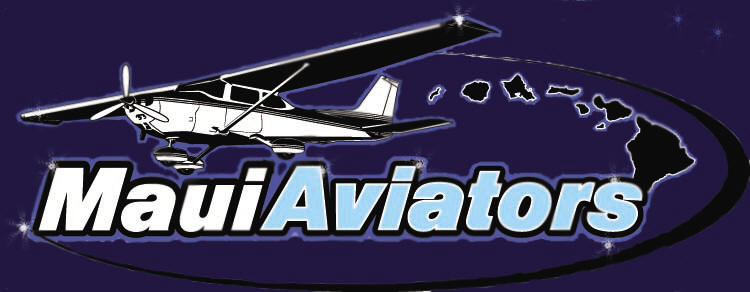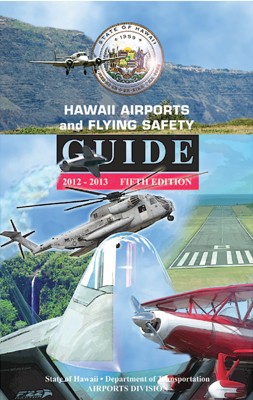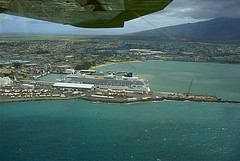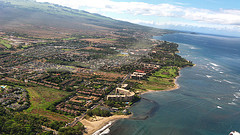Flying Hawaii Page
E komo mai (Welcome)
Flickr Photos
|
Hawaii Analyses/Forecasts Load WunderMap® |
Maui Aviators


NOAA Aviation Weather Center - Hawaii

Satellite Imagery


Hawaii's Aviation History
Early Aviation in Hawaii
The history of aviation in Hawaii from the early 1900's to the present day.
Interest in aviation in Hawaii boomed from that moment on with a number of adventurous souls making flights on Oahu and the Neighbor Islands. The first flight between
islands was made on March 15, 1918 when Army officer Maj. Harold M. Clark Jr. flew to Molokai and back. In 1919, the military were the first to establish a landing strip in Honolulu, but it wasn’t until 1925 that a joint fund raising effort by the Chamber of
Commerce and the Territorial Legislature made Hawaii’s first airport a reality. The landing along Keehi Lagoon was acquired for a sum of $27,410.
The airport was dedicated on March 21, 1927. The field was named in honor of the late Commander John Rodgers, a naval aviator, who piloted the first aircraft
to reach Hawaii after an adventurous flight that ended with the plane landing in the ocean and being sailed to the island of Kauai with fabric torn from the wings.
The 1927 Territorial Legislature also appropriated funds for further development of John Rodgers Airport. As a result, aviation enterprises boomed in Hawaii.
Inter-Islands Airways (now known as Hawaiian Airlines) was organized in 1929 and inaugurated service to the Neighbor Islands on November 11 of that year with
three eight-passenger amphibians, thus beginning the first dependable air transportation service in Hawaii.
The first commercial airline flight from the mainland to Hawaii was on April 16, 1935 by a Pan American Airways Sikorsky S-42 seaplane. The trip from San Francisco
to Pearl Harbor took 17 hours and 14 minutes.
The military took over all airport operations during World War II, grounding all civilian aircraft. The airport was returned to the Territory of Hawaii on October 1, 1946
and renamed Honolulu Airport.
The following year, the Territorial Legislature formed the Hawaii Aeronautics Commission to operate all airports in the Territory. Following Statehood in 1959,
the Hawaii Aeronautics Commission was abolished and its duties were taken over by the state Department of Transportation on July 1, 1961.
With the introduction of jet service to Hawaii in 1959, the old terminal began bursting at the seams. Construction of a new jet-age terminal began in February, 1959.
The new John Rodgers Terminal became operational on October 15, 1962. It is continually being upgraded to accommodate modern jet aircraft and an increasing number of
passengers.
As Hawaii’s tourism industry grew, so has the airport’s need for new gates and passenger facilities. In 1993 a new Interisland Terminal was opened west of the Overseas
Terminal for Interisland flights. A new Commuter Terminal opened in 1991.
Honolulu International Airport is adjacent to Hickam Air Force base and though joint-use agreements, the state and military share the runways.<.p>
After searching for several decades for a location for a new general aviation facility to relieve crowded conditions at HNL, the state received 757 acres of surplus land
at Barbers Point Naval Air Station on July 1, 1999 to be used as a GA facility. The new airport, named Kalaeloa Airport, is being used by general aviation aircraft to
practice pilot training, formerly done at Ford Island and HNL.
Article Courtesy of the Hawaii Department of Transportation
When once
you have tasted flight, you will walk the Earth with your eyes turned
skyward, for there you have been and there you long to return".
— Leonardo DaVinci
Interest in aviation in Hawaii boomed from that moment on with a number of adventurous souls making flights on Oahu and the Neighbor Islands. The first flight between islands was made on March 15, 1918 when Army officer Maj. Harold M. Clark Jr. flew to Molokai and back. In 1919, the military were the first to establish a landing strip in Honolulu, but it wasn’t until 1925 that a joint fund raising effort by the Chamber of Commerce and the Territorial Legislature made Hawaii’s first airport a reality. The landing along Keehi Lagoon was acquired for a sum of $27,410.
The airport was dedicated on March 21, 1927. The field was named in honor of the late Commander John Rodgers, a naval aviator, who piloted the first aircraft to reach Hawaii after an adventurous flight that ended with the plane landing in the ocean and being sailed to the island of Kauai with fabric torn from the wings.
The 1927 Territorial Legislature also appropriated funds for further development of John Rodgers Airport. As a result, aviation enterprises boomed in Hawaii.
Inter-Islands Airways (now known as Hawaiian Airlines) was organized in 1929 and inaugurated service to the Neighbor Islands on November 11 of that year with three eight-passenger amphibians, thus beginning the first dependable air transportation service in Hawaii.
The first commercial airline flight from the mainland to Hawaii was on April 16, 1935 by a Pan American Airways Sikorsky S-42 seaplane. The trip from San Francisco to Pearl Harbor took 17 hours and 14 minutes.
The military took over all airport operations during World War II, grounding all civilian aircraft. The airport was returned to the Territory of Hawaii on October 1, 1946 and renamed Honolulu Airport.
The following year, the Territorial Legislature formed the Hawaii Aeronautics Commission to operate all airports in the Territory. Following Statehood in 1959, the Hawaii Aeronautics Commission was abolished and its duties were taken over by the state Department of Transportation on July 1, 1961.
With the introduction of jet service to Hawaii in 1959, the old terminal began bursting at the seams. Construction of a new jet-age terminal began in February, 1959. The new John Rodgers Terminal became operational on October 15, 1962. It is continually being upgraded to accommodate modern jet aircraft and an increasing number of passengers.
As Hawaii’s tourism industry grew, so has the airport’s need for new gates and passenger facilities. In 1993 a new Interisland Terminal was opened west of the Overseas Terminal for Interisland flights. A new Commuter Terminal opened in 1991.
Honolulu International Airport is adjacent to Hickam Air Force base and though joint-use agreements, the state and military share the runways.<.p>
After searching for several decades for a location for a new general aviation facility to relieve crowded conditions at HNL, the state received 757 acres of surplus land at Barbers Point Naval Air Station on July 1, 1999 to be used as a GA facility. The new airport, named Kalaeloa Airport, is being used by general aviation aircraft to practice pilot training, formerly done at Ford Island and HNL.
Article Courtesy of the Hawaii Department of Transportation
When once you have tasted flight, you will walk the Earth with your eyes turned skyward, for there you have been and there you long to return". — Leonardo DaVinci



